[Previously: the Permian and Triassic]
The next part of the Crystal Palace Dinosaur trail depicts the Jurassic and Cretaceous periods. Most of the featured animals here are actually marine reptiles, but a few dinosaur species do make an appearance towards the end of this section.
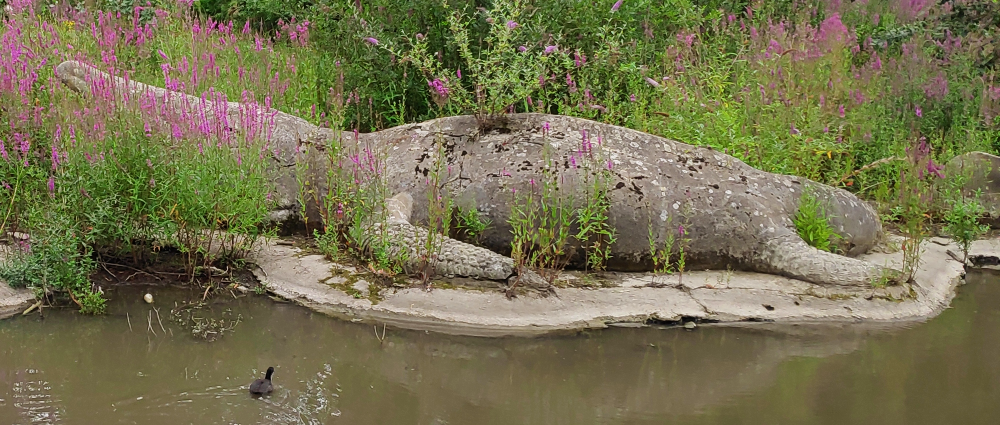
Although there are supposed to be three Jurassic ichthyosaur statues here, only the big Temnodontosaurus platyodon could really be seen at the time of my visit. The two smaller Ichthyosaurus communis and Leptonectes tenuirostris were almost entirely hidden by the dense plant growth on the island.

Left side image by Nick Richards (CC BY SA 2.0)
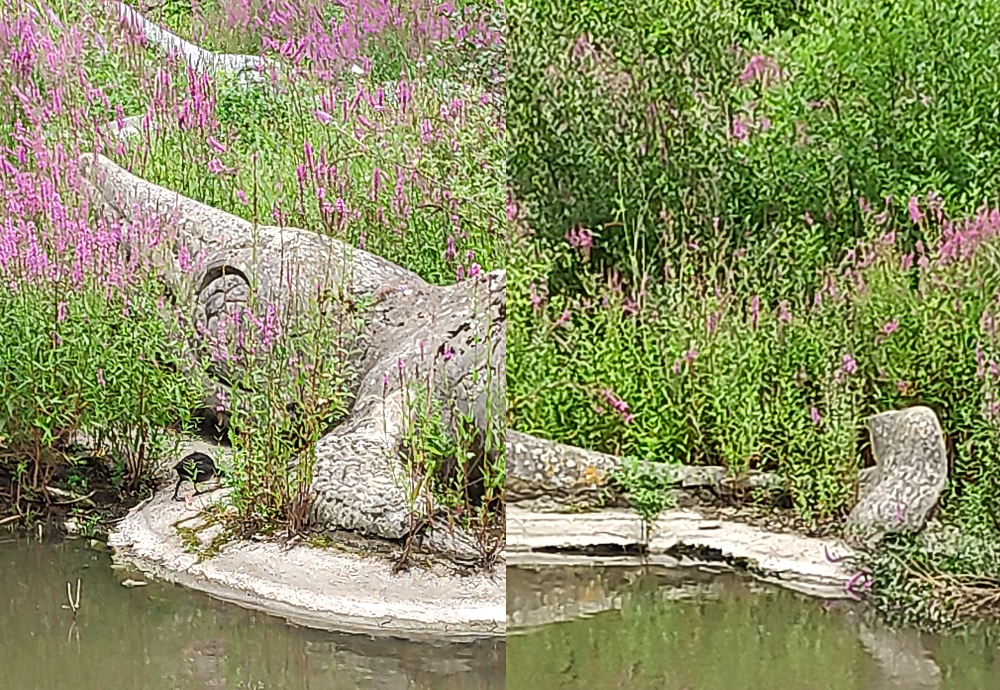
Ichthyosaurs were already known from some very complete and well-preserved fossils in the 1850s, so a lot of the anatomy here still holds up fairly well even 170 years later. They even have an attempt at a tail fin despite no impressions of such a structure having been discovered yet! Some details are still noticeably wrong compared to modern knowledge, though, such as the unusual amount of shrinkwrapping on the sclerotic rings of the eyes and the bones of the flippers.


Arranged around the ichthyosaur, three different Jurassic plesiosaurs are also represented – “Plesiosaurus” macrocephalus with the especially sinuous neck on the left, Plesiosaurus dolichodeirus in the middle, and Thalassiodracon hawkinsi on the right.
They’re all depicted here as amphibious and rather seal-like, hauling out onto the shore in the same manner as the ichthyosaurs. While good efforts for the time, we now know these animals were actually fully aquatic, that they had a lot more soft tissue bulking out their bodies, and that their necks were much less flexible.

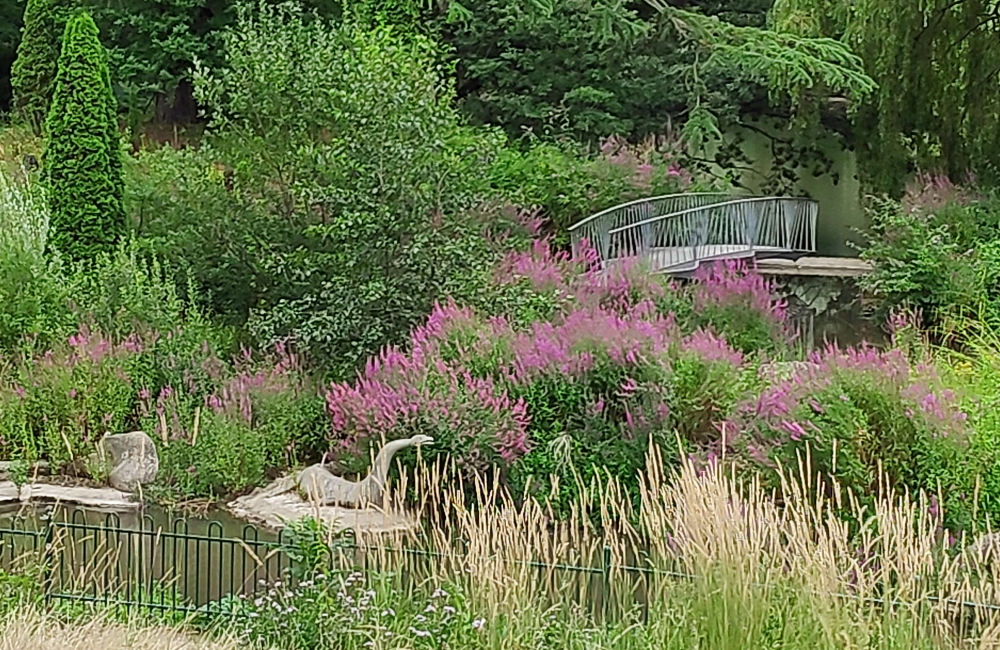
The recently-installed new pivot bridge is also visible here behind some of the marine reptiles.
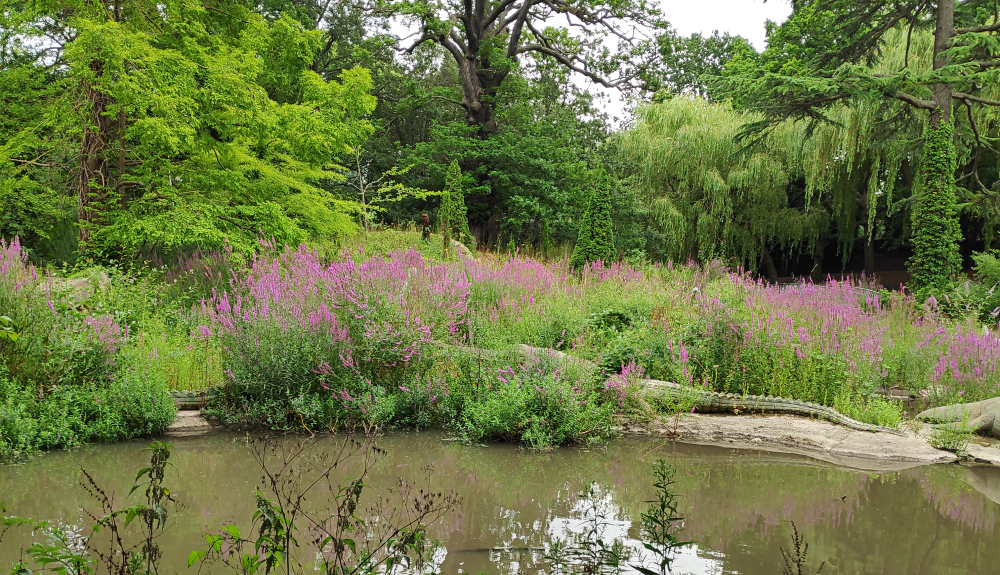
Positioned to the left of the other marine reptiles, this partly-obscured pair of croc-like animals are teleosaurs (Teleosaurus cadomensis), a group of Jurassic semi-aquatic marine crocodylomorphs.
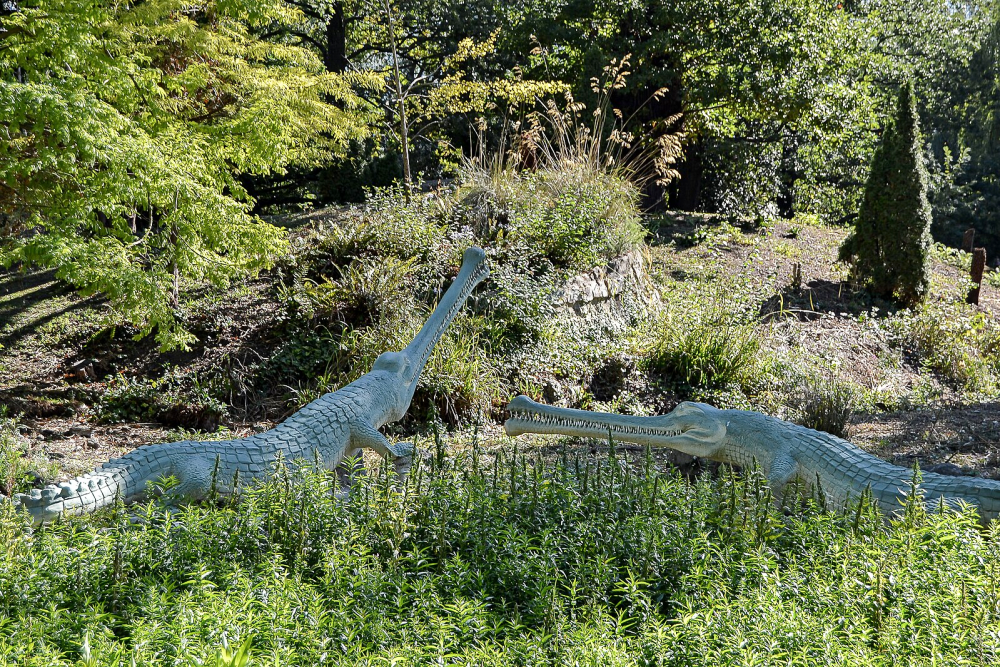
The Crystal Palace statues have the general proportions right, with long thin gharial-like snouts and fairly small limbs. But some things like the shape of the back of the head and the pattern of armored scutes are wrong, which is odd considering that those details were already well-known in the 1850s.

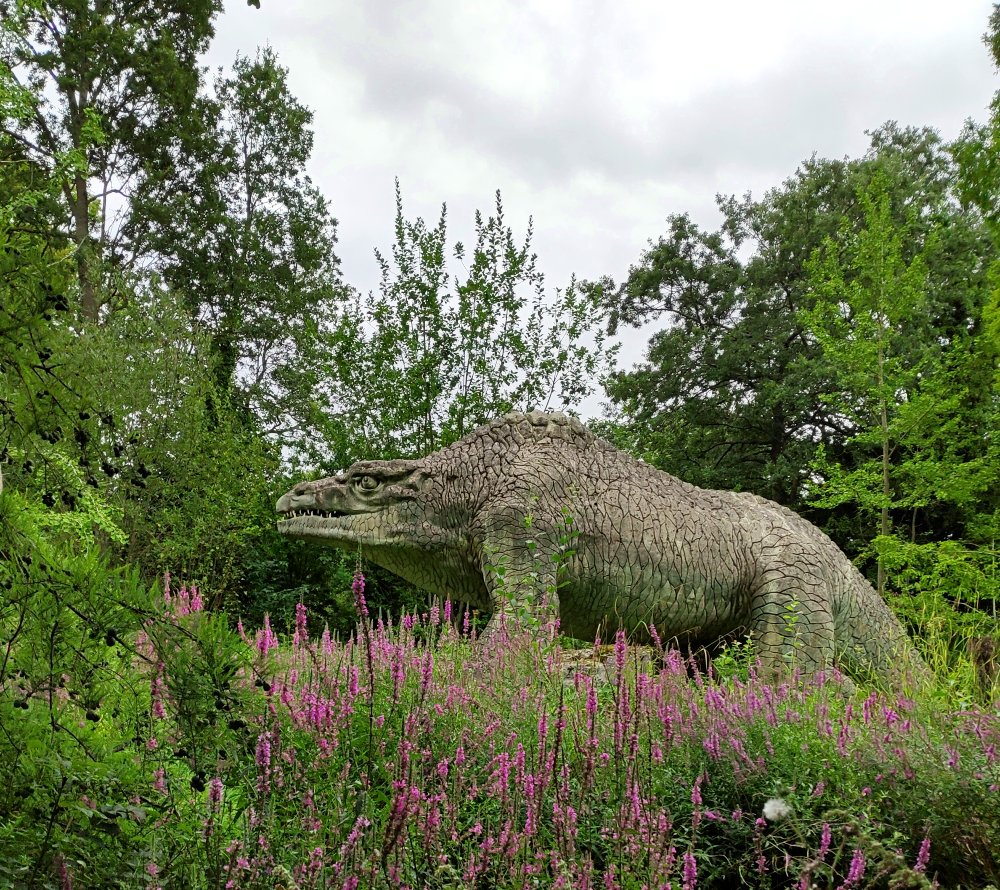
Finally we reach the first actual dinosaur, and one of the most iconic statues in the park: the Jurassic Megalosaurus!
Megalosaurus bucklandi was the very first non-avian dinosaur known to science, discovered in the 1820s almost twenty years before the term “dinosaur” was even coined.
At a time when only fragments of the full skeleton were known, and before any evidence of bipedalism had been found, the Crystal Palace rendition of Megalosaurus is a bulky quadrupedal reptile with a humped back and upright bear-like limbs. It’s a surprisingly progressive interpretation for the period, giving the impression of an active mammal-like predator.
This statue suffered extensive damage to its snout in 2020, which was repaired a year later with a fiberglass “prosthesis”.

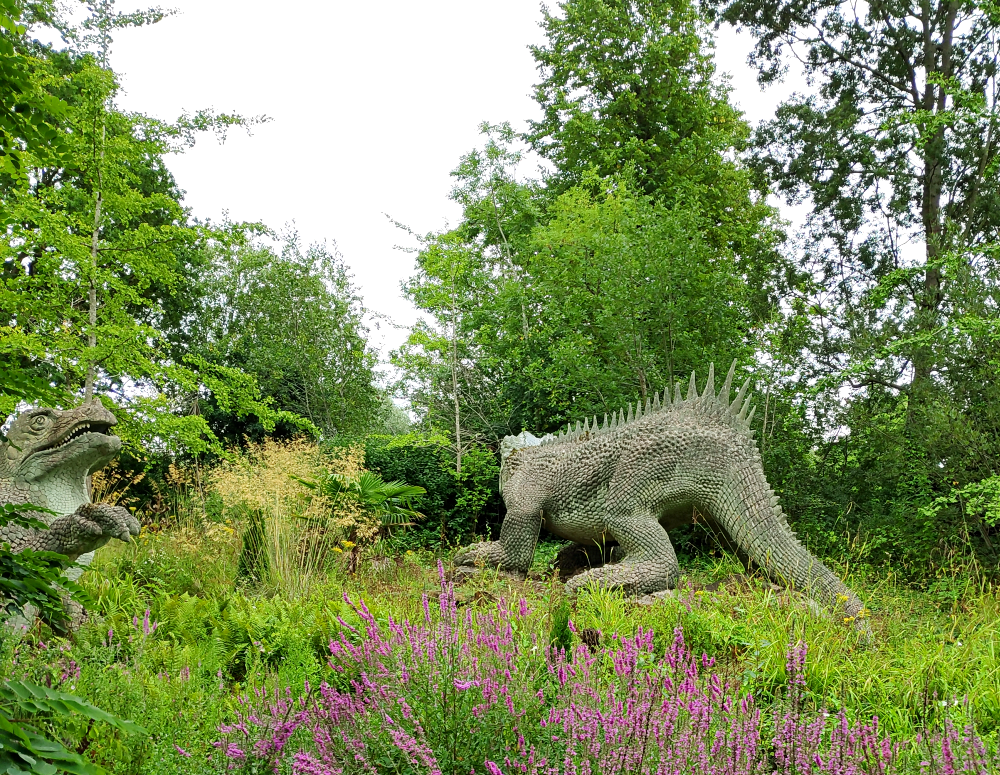
Reaching the Cretaceous period now, we find Hylaeosaurus (and one of the upcoming Iguanodon peeking in from the side).
Hylaeosaurus armatus was the first known ankylosaur, although much like the other dinosaurs here its life appearance was very poorly understood in the early days of paleontology. Considering how weird ankylosaurs would later turn out to be, the Crystal Palace depiction is a pretty good guess, showing a large heavy iguana-like quadruped with hoof-like claws and armored spiky scaly skin.
It’s positioned facing away from viewers, so its face isn’t very visible – but due to the head needing to be replaced with a fiberglass replica some years ago, the original can now be seen (and touched!) up close near the start of the trail.
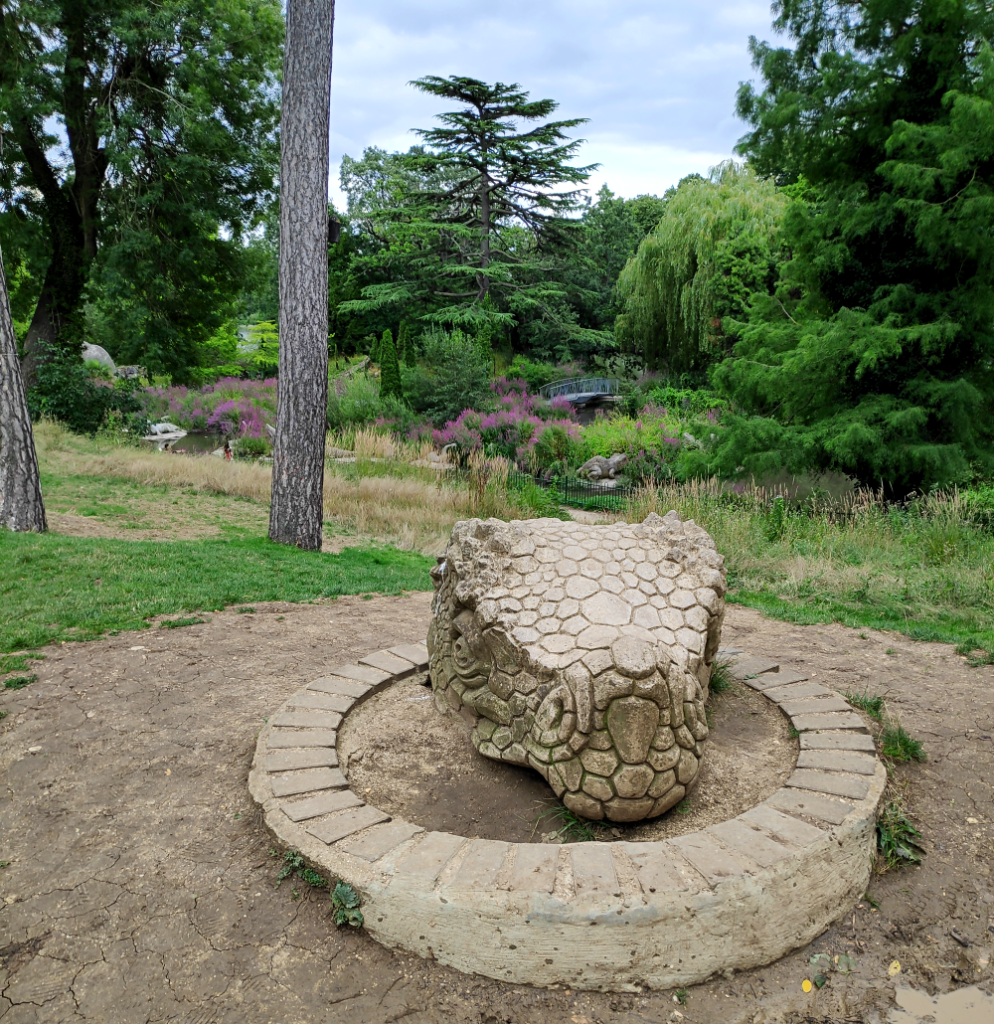


Two pterosaurs (or “pterodactyles” according to the park signs) were also supposed to be just beyond the Hylaeosaurus, but plant growth had completely blocked any view of them.
Although these two statues are supposed to represent a Cretaceous species now known as Cimoliopterus cuvieri, they were probably actually modeled based on the much better known Jurassic-aged Pterodactylus antiquus.
A second set of pterosaur sculptures once stood near the teleosaurs, also based on Pterodactylus but supposed to represent a Jurassic species now known as Dolicorhamphus bucklandii. These statues went missing in the 1930s, and were eventually replaced with new fiberglass replicas in the early 2000s… only to be destroyed by vandalism just a few years later.
(The surviving pair near the Hylaeosaurus are apparently in a bit of disrepair these days, too, with the right one currently missing most of its jaws.)
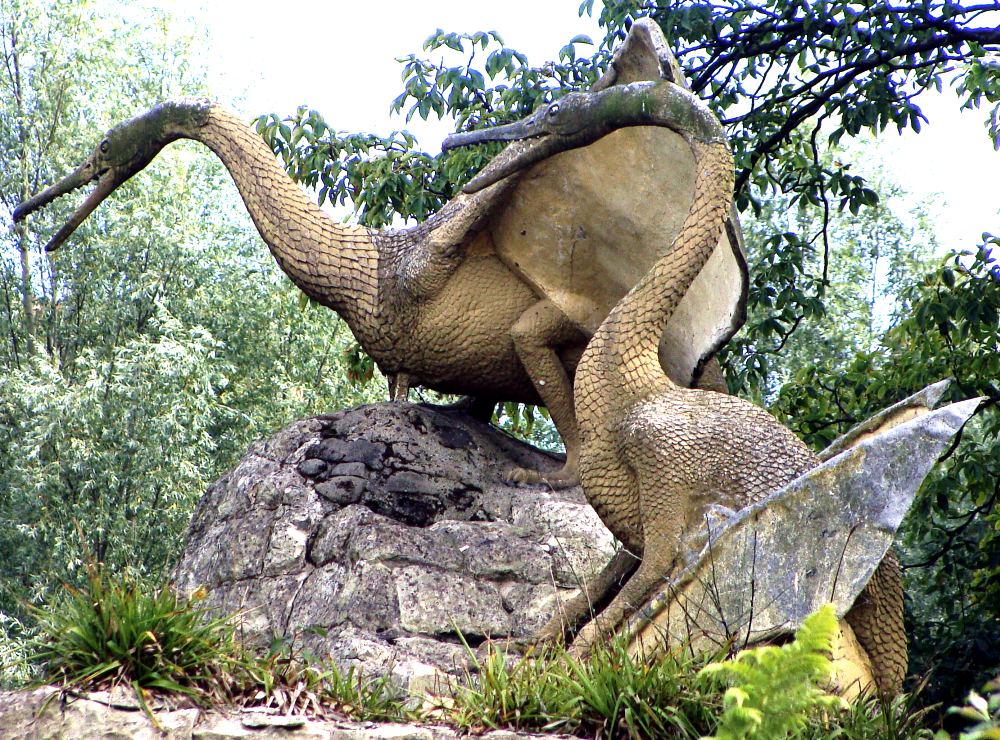
The Crystal Palace pterosaurs weren’t especially accurate even for the time, with heads much too small, swan-like necks, and bird-like wings that don’t attach the membranes to the hindlimbs. Hair-like fuzz had been observed in pterosaur fossils in the 1830s, but these depictions are covered in large overlapping diamond-shaped scales due to Richard Owen‘s opinion that they should be scaly because they were reptiles.
But some details still hold up – the individual with folded wings is in a quadrupedal pose quite similar to modern interpretations, and the bird-like features give an overall impression of something more active and alert than the later barely-able-to-fly sluggish reptilian pterosaur depictions that would become common by the mid-20th century.

(Much like the statues themselves, the “modern” reconstruction above is based on Pterodactylus rather than Cimoliopterus)
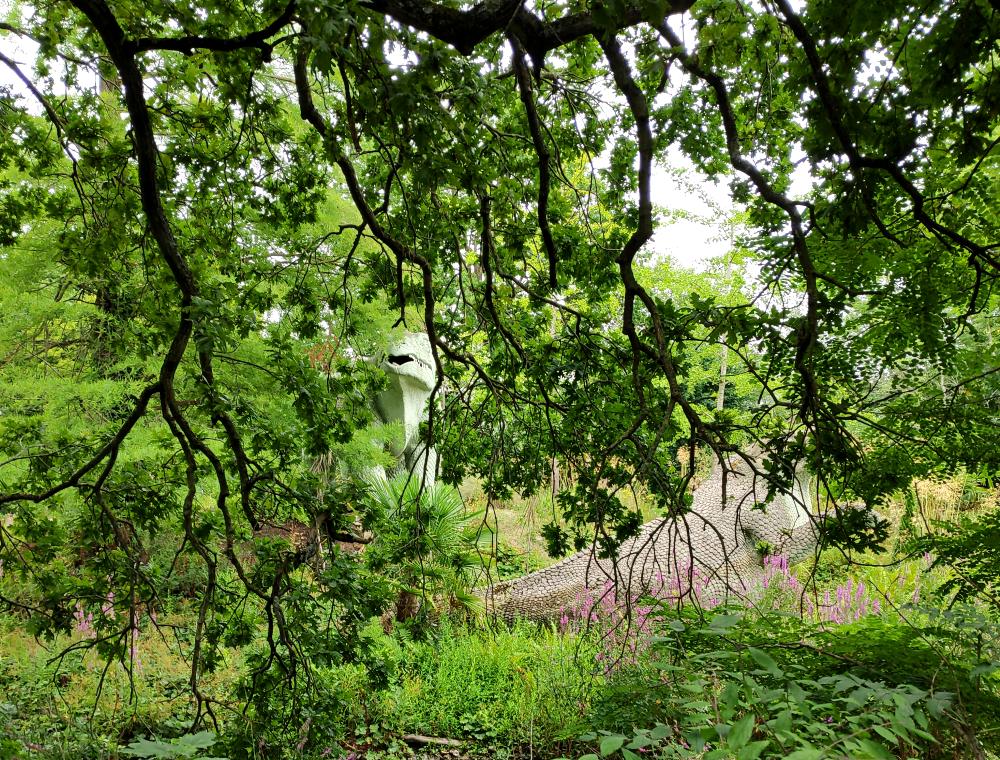
The last actual dinosaurs on this dinosaur trail are the two Cretaceous Iguanodon sculptures. At the time of my visit they weren’t easy to make out behind the overgrown trees, and only the back end of the standing individual was clearly visible.
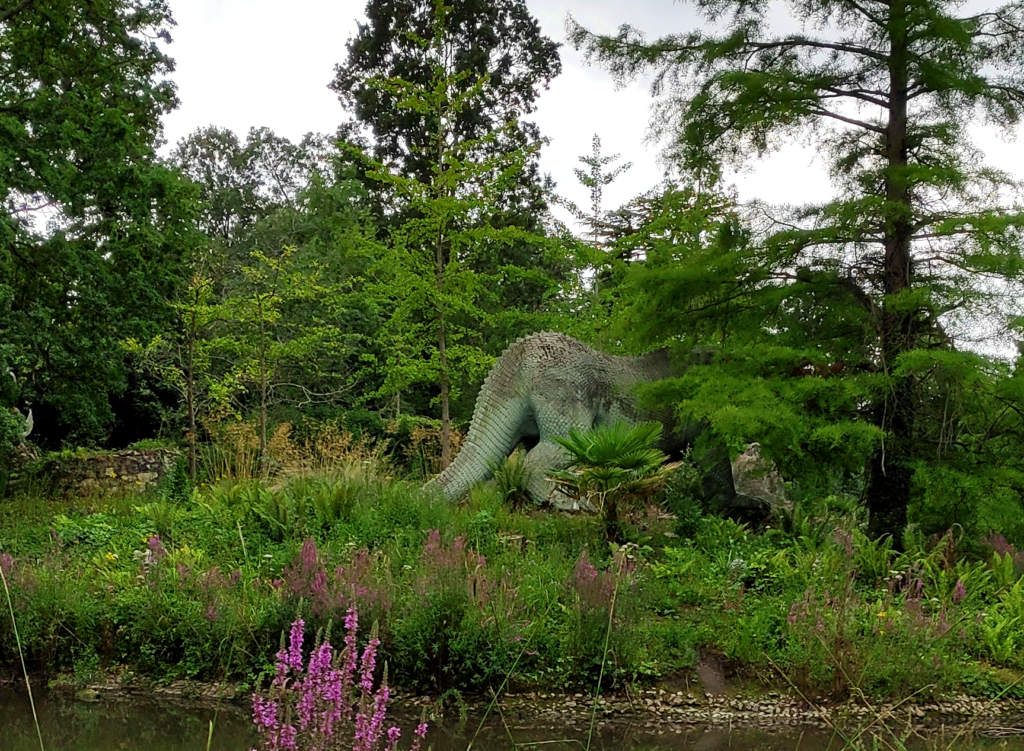
Named only a year after Megalosaurus, Iguanodon was the second dinosaur ever discovered, and early reconstructions depicted it as a giant iguana-like lizard.
The Crystal Palace statues depict large bulky animals, one in an upright mammal-like stance and another reclining with one hand raised up. (This hand is usually resting on a cycad trunk, but that element appeared to be either missing or fallen over when I was there.)
Famously a New Year’s dinner party was held in the body of the standing Iguanodon during its construction, although the accounts of how many people could actually fit inside it at once are probably slightly exaggerated.
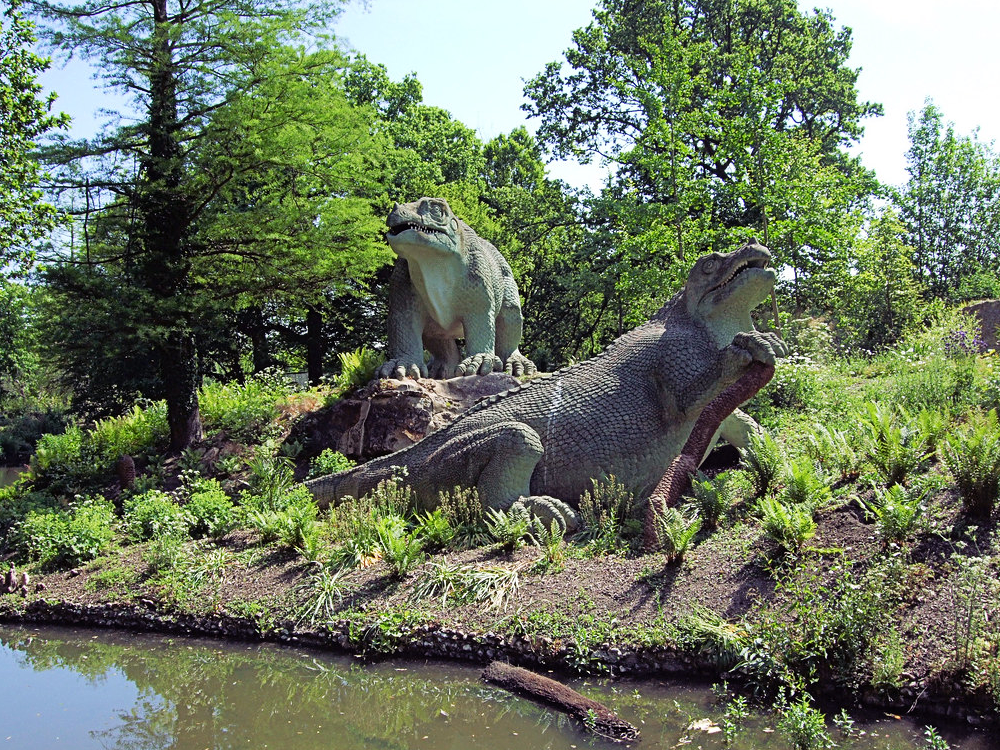
Considering that the skull of Iguanodon wasn’t actually known at the time of these sculpture’s creation, the head shape with a beak at the front of the jaws is actually an excellent guess. The only major issue was the nose horn, which was an understandable mistake when something as strange as a giant thumb spike had never been seen in any known animal before.

(The fossils the Crystal Palace statues are based on are actually now classified as Mantellisaurus atherfieldensis, but the “modern” reconstruction above depicts the chunkier Iguanodon bernissartensis.)
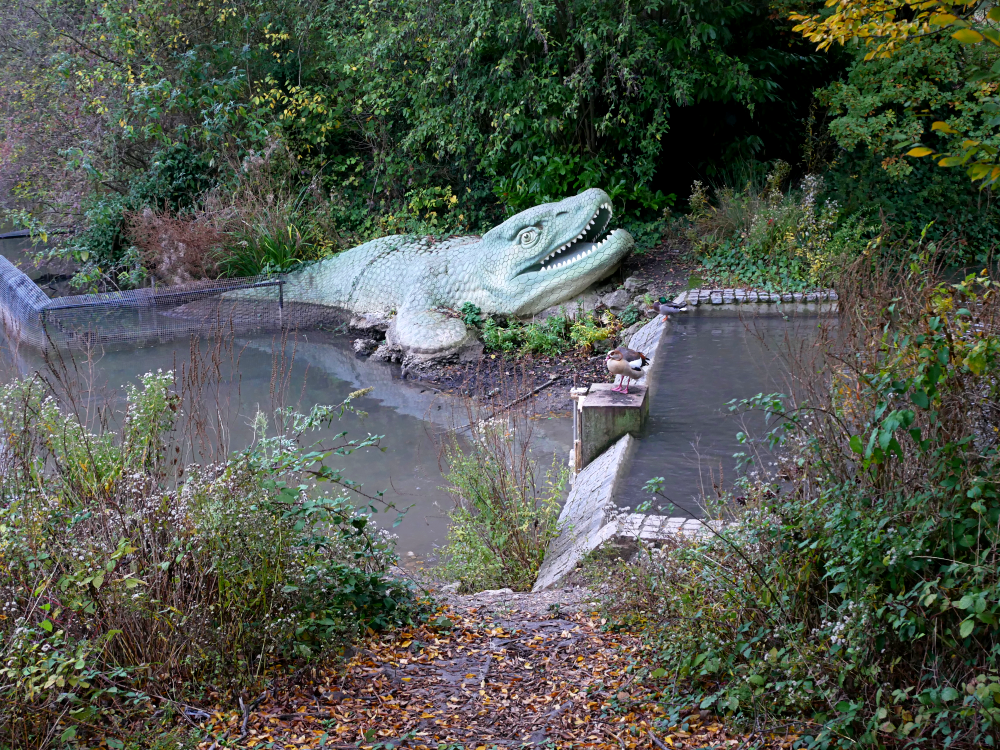
I also wasn’t able to spot the Cretaceous mosasaur on the other side of the island due to heavy foliage obscuring the view.
Depicting Mosasaurus hoffmannii, this model consists of only the front half of the animal lurking at the water’s edge. It’s unclear whether this partial reconstruction is due to uncertainty about the full appearance, or just a result of money and time running out during its creation.
The head is boxier than modern depictions, and the scales are too large, but the monitor-lizard like features and paddle-shaped flippers are still pretty close to our current understanding of these marine reptiles. It even apparently has the correct palatal teeth!

Next time: the final Cenozoic section!
